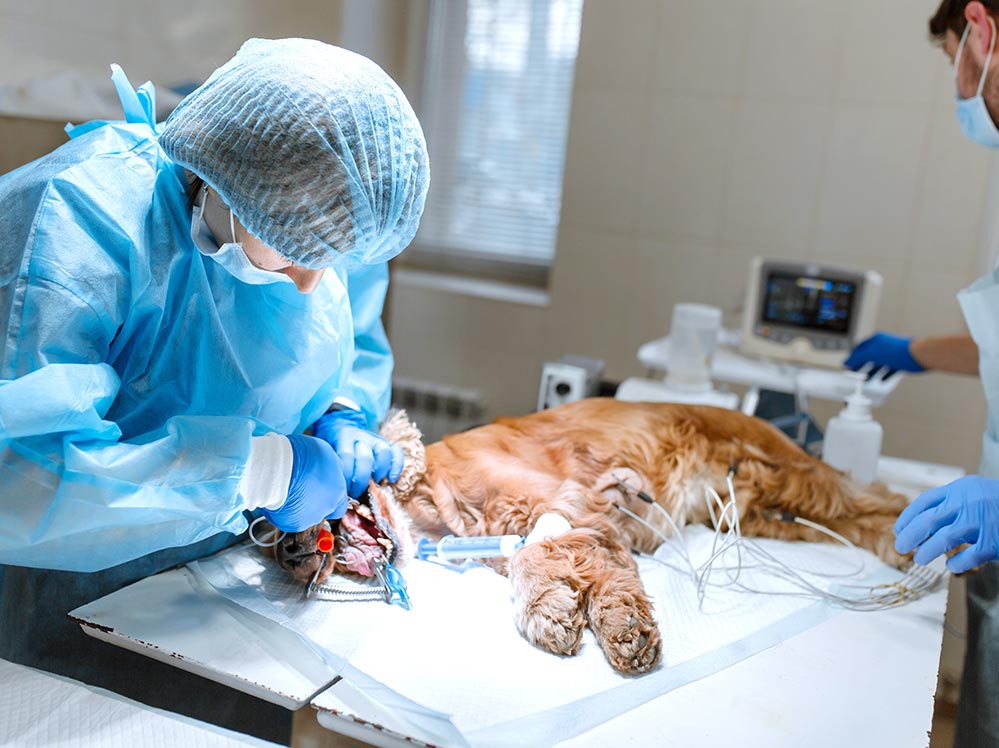It can be most traumatising when your precious pet family member meets with a car accident. In urban Melbourne settings, it often happens when a dog or cat escapes beyond the confines of the home due to an unlocked door left open. In situations like this, the best thing to do is immediately but carefully transport your loved one to the nearest vet.
One fine morning, in the middle of a consult, the door suddenly swung open and I was interrupted by my nurse calling “emergency”…
Daisy
I walked into the emergency room to find a beautiful brown Senior Jack Russell Terrier lying limp on the operating table. It had escaped the house and was hit by a passing car on the street.
Thankfully, the distraught owner had the presence of mind to transport his precious Daisy with minimal manipulation. He kept her body straight and the head and spine in its natural line. No tension or pressure was applied to any other part of the body as he cradled her in the car and rushed to the nearest clinic to their home.
Stabilisation
Daisy was breathing and had no sign of internal bleeding by examination and quick ultrasound check . However, I noticed concerning neurological signs. Daisy’s eyeballs were making jerky movements. She was in a seizure and totally unresponsive to voices. I suspected head trauma and possible brain hemorrhaging (bleeding) in her skull or a brain edema (swelling).
Because the skull is inflexible, pressure builds up within the brain and it becomes dangerous for the dog. On top of that, Daisy was in shock status and needed supportive treatment. Her heart rate was racing but her blood pressure was low. Her gums were looking pale pink but still not very pale.
My amazing team of nurses and I immediately put Daisy on oxygen therapy, got access to intravenous to support her blood perfusion and also gave her medications to reduce the swelling in her brain. Thankfully, this worked. It relieved the pressure in her skull and Daisy began regaining consciousness. This allowed us then to administer the most appropriate pain medication.
30-minutes after the accident, Daisy was now stable.
Diagnosis
Now that Daisy was stable, we were able to do some x-rays. I did an Ultrasound check at arrival and then Xray after stabilisation to ensure there was no internal bleeding or ruptures to the diaphragm, bladder or any lung contusion and also checking for any possible bone fractures. What emerged was a picture of multi-fractured hip bones. This was beyond our expertise and we had Daisy safely transported to a specialist hospital nearby.
A few days later, once Daisy was fit enough and over the trauma, she underwent an orthopaedic surgery to help her regain her mobility. Thankfully, it was successful.
Miracle Recovery
2-weeks after the surgery, Daisy was touring her neighbourhood in a pram – happy again to see her park friends, albeit at a distance. Few weeks later she was able to trot about in the park, strictly on a leash of course, to prevent her from undoing the delicate repair work of the surgeon. And then just 8-weeks after surgery, Daisy was walking well again.
Daisy’s owner works at a local market where she accompanies him at the stall, watching clients go by. The owner’s son remains very attached to the Terrier and grateful that Daisy continues to be a part of the family.
Our Hope
While Daisy was not our patient before, I feel blessed that we were able to play a small part in her miracle recovery. If there is any take home message I’d like to impart is this:
- Keep your pet emergency numbers saved on speed dial
- Know the nearest vet to your home (even if it’s not your regular vet)
- Act fast but carefully
- Be hopeful – there are many amazing pet lover professionals out there that will do everything in their power to save your furry family member




Let’s Get Social